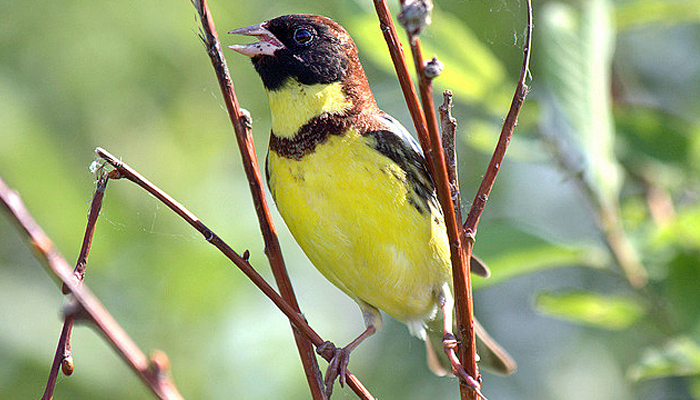
English: Yellow-breasted Bunting
Russian: Дубровник
Mongolian: Шарэлэгт хөмрөг
German: Weidenammer
French: Bruant aureole
Japanese: シマアオジ (Shima-aoji)
Body length: 14-15.5 cm
Wing span: 21-24 cm
Breeding visitor
Breeding season:
May-August
Egg number: 4-5 (occasionally
6)
Egg colour: Greyish, ground colour with
purplish-black or brown spots, blotches.
Brood: 1 per year
Food: Terrestrial insects,
their larvae and seeds of various plants.
Status: Rare species. According to the IUCN Red List categories and criteria,
the species evaluated as-Near Threatened.
Distribution and Range: China, Korea, Bering, Kamchatka, Sakhalin, Kazakhstan, Western
and eastern Siberia. In Mongolia: Mongol Altai, Achit Lake, Kharkhiraa,
Turgenii Mountains, Khovd River, Uvs Lake, Khar Us Lake, Khar Lake, Khangai,
Khentii, Mountain Range, Khan Khokhii Mountain Range, Buir, Khalkh, Nomrog,
Azarga Rivers, Southern Altai Govi, Shar Khulsny bulan, Tsagaan Burgas, Alag
Lake, Baruun Khuurai, Bulgan River, Uyench and Bodonch Rivers.
Habitat: Breeding visitors in marshland and waterside scrub near river valleys,
wetland meadows with reeds and bushes, forest clearing.
Population and Threats: Population not assessed. In recent years, population diminishing
within its range. Threats: widespread droughts and drying out wetland meadows,
reducing nesting habitats for the species. From the monitoring survey results,
it is evident that while migrating the species are captured in China in large
numbers, to be used for decorative purposes and food consumption. This is one
of the main reasons in population loss.
Conservation Measures: Listed as Rare animal in the Annex to the Mongolian Government
resolution #7 (2012). The distribution area is included in the NSPAN.
Further actions: Assess its distribution and population abundance, improve
conservation measures at breeding habitats and raise awareness.